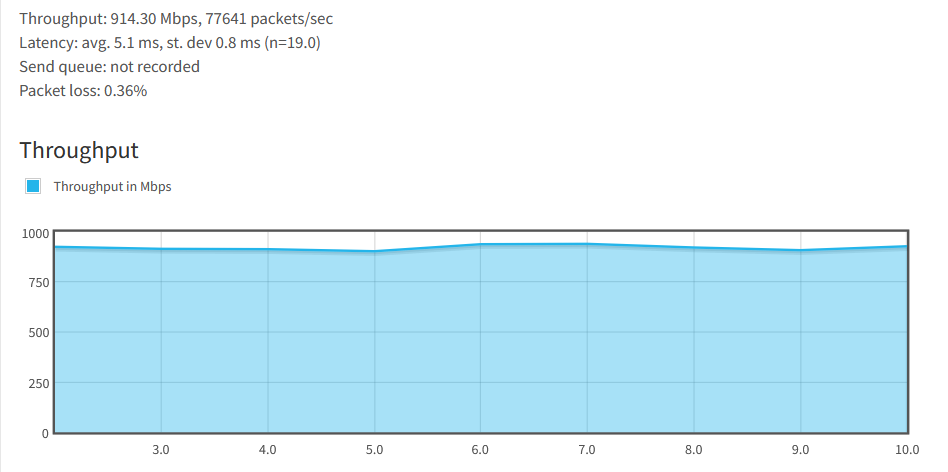Nepean Network’s SD-WAN Secret Power | Unmasking the Invisible Villain – Packet Loss 🎩✨
 Ronald Bartels
Ronald Bartels
In the world of networking, packet loss is like a sneaky thief in the night – it steals your bandwidth, ruins your calls, and slows down your business, yet no one can ever seem to catch it in the act. 😤
Network operators love to dismiss complaints about packet loss with the classic “Our network is fine, it must be on your side” excuse. But what if you had a secret weapon that could detect, measure, and prove packet loss beyond all doubt?
Welcome to Nepean Networks, powered by the groundbreaking Antares platform – a solution that doesn’t just guess at network problems but exposes them with ruthless precision. 🔍💡
🚨 What is Packet Loss & Why is it a Problem?
Packet loss happens when data packets traveling across a network mysteriously vanish before reaching their destination. Sounds minor? Think again. Even a small percentage of packet loss can cause:
❌ Choppy VoIP calls – "Hello? Can you hear me? Hell— [silence]..."
❌ Laggy video conferencing – "Your video is frozen again, Bob."
❌ Slow application performance – because retransmissions kill efficiency.
❌ Poor cloud connectivity – essential business apps becoming unusable.
The worst part? It’s often intermittent, making it hard to detect, and even harder to prove.
🔬 Why is Packet Loss So Hard to Prove?
If you've ever reported packet loss to your ISP or network provider, you've likely heard one of these legendary responses:
📞 "We ran a test and everything looks fine."
📞 "Our SLAs only cover total outages, not performance issues."
📞 "Have you tried turning it off and on again?" 😑
Why? Because traditional monitoring tools aren’t built to detect short bursts of packet loss. Standard pings and traceroutes often miss the problem entirely. Meanwhile, ISPs only care about complete link failures – if packets drop but the link stays "up," they’ll happily tell you it’s not their problem.
🔥 Nepean Network’s Secret Power | Unmasking Packet Loss in Real Time
Nepean Network’s Antares platform is a game-changer because it actively monitors packet loss on every link in real time. Here's how it works:
✅ Continuous Performance Monitoring – Tracks packet loss dynamically, not just when you remember to test it.
✅ Per-Path Analysis – Identifies exactly where the problem is happening (your ISP can’t hide anymore).
✅ Automatic Failover – If one path experiences loss, Nepean Network’s SD-WAN intelligently reroutes traffic to a cleaner link before you even notice an issue.
✅ Historical Reporting – Provides hard proof that loss occurred, helping businesses hold network providers accountable.
No more “he said, she said” with your ISP – Nepean Networks gives you the evidence to demand action. 💪📊
🧠 Smart Algorithms & Machine Learning for Intelligent Packet Loss Mitigation
Nepean Network’s Antares platform goes beyond just detecting packet loss – it actively predicts and mitigates it using advanced machine learning algorithms.
🔹 AI-Driven Path Selection – Nepean Network’s SD-WAN continuously learns from network conditions and adapts in real time. If packet loss is detected on a path, traffic is seamlessly rerouted through an alternative path before users even notice a problem. 🚀
🔹 Dynamic Link Optimization – The system automatically prioritizes traffic over the best-performing links, ensuring critical applications like VoIP and video conferencing always get the cleanest possible path. 🎯
🔹 Historical Trend Analysis – Antares doesn't just look at packet loss in the moment – it studies past network performance to predict potential degradation before it happens. 🔮
⬆️⬇️ Unique Uplink & Downlink Packet Loss Detection & Mitigation
Most SD-WAN solutions treat packet loss as a single metric, failing to distinguish between uplink (outbound traffic) and downlink (inbound traffic).
Nepean Network’s SD-WAN, however, uniquely separates uplink and downlink loss detection to provide even more granular performance optimization:
📡 Uplink Packet Loss Detection – If Nepean Network’s detects packet loss when sending data, it reroutes outbound traffic over an alternate link, ensuring data gets out cleanly.
📥 Downlink Packet Loss Detection – If incoming packets are being lost, Nepean Networks intelligently shifts to a better-performing path for receiving data.
This bi-directional awareness gives Nepean Networks an unparalleled advantage in keeping business-critical applications running smoothly, even in high packet loss conditions.
🚀 The Antares Advantage | Turning the Tables on Network Operators
With Antares, Nepean Networks’s SD-WAN doesn’t just detect packet loss – it weaponises that knowledge to protect your business.
🔹 Your VoIP calls stay clear.
🔹 Your Teams meetings run smoothly.
🔹 Your cloud apps work without frustrating delays.
🔹 Your business stays connected and productive.
Meanwhile, your network provider can no longer gaslight you into thinking the problem doesn’t exist. You have the proof, and Nepean Networks has the solution.
💡 SD-WAN Built for the Real World
Most SD-WANs treat all packet loss equally – Nepean Network’s Antares platform actually measures it, proves it, and fights it.
So, next time your network starts acting up and your ISP plays dumb, remember:
👉 Nepean Network’s SD-WAN sees what they don’t want you to see.
👉 Antares exposes packet loss like never before.
👉 Your business stays connected, no matter what.
Packet loss? Not on Nepean Network’s watch. 🔥💪
Here is a practical example at one of Workshop17’s locations. The packet loss is detected, reported to the network operator which is Link Africa and then resolved.



Further reading:
Subscribe to my newsletter
Read articles from Ronald Bartels directly inside your inbox. Subscribe to the newsletter, and don't miss out.
Written by

Ronald Bartels
Ronald Bartels
Driving SD-WAN Adoption in South Africa